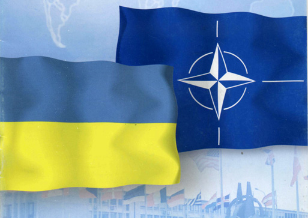- Home
- Euro-Atlantic integration
- NATO
- Civilian dimension of NATO's activities in Ukraine
NATO
Civilian dimension of NATO's activities in Ukraine

Despite the widespread stereotype of NATO as a military-political bloc, NATO is primarily a political organization with has the necessary military capabilities. And like any political organization, it pays considerable attention to the civil aspects of cooperation both between Member States and with partner countries involved in NATO's Partnership for Peace (PfP) program.
Cooperation in emergency planning and response civilian situations are the largest non-military component in within the PfP. One of NATO's most notable civilian initiatives is opening of the Euro-Atlantic Disaster Response Coordination Center in June 1998. Thanks to the activities of this Center, operational assistance of the international community were able to get victims of floods in Ukraine on Transcarpathia in 1998 and 2001, in Albania and the Czech Republic in 2002, in Azerbaijan in 2003, in Bulgaria, Georgia, Romania and Kyrgyzstan in 2005. The Center was also central link in the process of providing international humanitarian assistance earthquake-stricken regions of Pakistan in autumn 2005
Ukraine is also participating in a joint project with NATO and the OSCE creation of a mobile plant for the utilization and processing of rocket fuel.
The following programs are being implemented under the PfP Program and Ukraine's cooperation projects with NATO:
NATO Initiative for Building Defense Integrity and Transparency institutions
Purpose: to assist in the implementation of security sector structures and Ukraine's defense practices of effective, honest and transparent practices management; strengthening anti-corruption and anti-corruption mechanisms; improving the resource management system.
Basic forms: organization and conduct of self-assessment of defense and security institutions to identify corruption risks and threats; development of recommendations on this basis and their further implementation; organization and holding of training courses on anti-corruption issues; creation of a circle of national experts within the framework of the Initiative. Allied experts provide practical implementation assistance jointly identified priorities and tasks within the said NATO Initiative.
Professional development program for civilian personnel in the sector Security and Defense of Ukraine.
Purpose: to assist in the preparation of a single civilian program personnel of institutions of the security and defense sector of Ukraine, capable in their official activity to the introduction and implementation of systemic state reform.
Main forms: conducting seminars, round tables, internships, training courses in Ukraine and abroad with the financial support of NATO.
NATO's Military Education Improvement Program
Purpose: to assist management and teaching staff composition of military educational institutions of Ukraine in raising their level training in the interests of systematic improvement of military education.
Areas of cooperation: development of distance education system; innovative methods of education and teaching; language training; leadership; management theory; psychological training; psychological, legal and practical aspects of combat operations; NATO standards for the system troop management; short-term courses for warehouse management; foundations air operations; exchange of experience in NATO operations; war games and computer simulations of training; civil-military relations; informational security; training of staff officers; psychological support headquarters during the deployment of operations; teacher communication skills, commander; mathematical modeling of security issues; economic security.
NATO Small Arms Disposal Trust Fund in Ukraine and small arms and conventional ammunition.
Purpose: to attract international liquidation assistance surplus / obsolete small arms and light weapons, conventional ammunition, as well as anti-personnel mines such as PFM-1. This Trust Fund is the largest in the world in terms of volume among similar.
Task: Assist with recycling: at the 1st stage (2006-2010, completed) - 400 thousand units. LOSZ, 1 thousand MANPADS and 15,000 tons of ammunition; at the 2nd stage (2012 - 2017, ongoing) - 366 thousand units. LOSZ and 36.3 thousand. tons of ammunition; 76 thousand tons of conventional ammunition, 3 million units anti-personnel mines such as PFM-1; at the 3rd stage - 366 thousand units. LOSZ and 39.3 thousand tons of ammunition, 3 millions of PFM-1 anti-personnel mines. at the 4th stage - 368 thousand units. LOSZ and 42.4 thousand tons of ammunition.
Source link:
https://ukraine-nato.mfa.gov.ua/ua/ukraine-nato/civil-dimension
